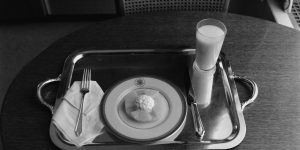What Happened On August 8th?
On August 8, 1974, Washington, D.C., buzzed with anticipation as the country waited for a historic announcement. Richard Nixon, the 37th President of the United States, spent the night grappling with the decision that would end his presidency.
The day began with a whirlwind of activity inside the White House. Nixon followed his routine, reading the morning news and meeting with his aides. But beneath the surface, he knew his resignation was inevitable. By noon, he realized he would step down that evening, setting the stage for a day filled with tension.
As the hours passed, Nixon met with his Cabinet for the last time at 11 a.m. He kept the meeting brief and solemn, a sharp contrast to the high-energy strategy sessions that once filled the White House. Nixon thanked his Cabinet members for their service, trying to maintain control. But everyone in the room understood the gravity of the situation. Some left with tears in their eyes, while others struggled to accept the end of his presidency.
That afternoon, Nixon isolated himself in the Oval Office to finalize his resignation speech. He spent hours alone, revising and refining his words. He knew history would remember this moment. His wife, Pat, and daughters, Julie and Tricia, visited him briefly to offer support. He ate his final lunch in the residence alone, which surprised most people as a humble final meal.

Few knew that Nixon made several last-minute calls to close friends and advisors before delivering his speech. Among those calls was one to Henry Kissinger, his Secretary of State, where Nixon reportedly expressed deep regret, not just for his actions but for the way his presidency would be remembered. Kissinger later recalled that Nixon, a man often described as emotionally distant, seemed unusually vulnerable, revealing the toll the entire ordeal had taken on him.
As the clock neared 9 p.m., tension gripped the White House. Staff members gathered around televisions, preparing for the President’s address. Nixon, dressed in a dark suit, entered the Oval Office for the last time as President. He sat behind the Resolute Desk, where he had made countless decisions and ultimately shaped his own fate.
At precisely 9 p.m., Nixon began his address. “Good evening,” he said, his voice steady but weighed down by the moment. “This is the 37th time I have spoken to you from this office, where so many decisions have been made that shaped the history of this nation.” For the next 16 minutes, he explained why he had to step down, admitting that he no longer had the support to stay in office. He highlighted his achievements, such as ending the Vietnam War and opening relations with China and the Soviet Union. But it was clear: Nixon resigned because he had no other choice.
After the address, Nixon returned to the residence, where his family waited. The somber mood reflected the reality of his political career’s end. They spent the evening mostly in silence, fully aware of the weight of what had just occurred. Nixon later spent several hours alone, walking through the White House corridors.
The next morning, August 9, Nixon officially resigned, handing over the presidency to Gerald Ford. However, the events of August 8 marked the true turning point—a day when the nation watched as its leader, overwhelmed by scandal, accepted defeat and prepared to step down.
In the months leading up to this day, the Watergate scandal steadily unraveled Nixon’s presidency. It all began with a break-in at the Democratic National Committee headquarters on June 17, 1972, which eventually exposed a vast political scheme involving Nixon’s administration.
As the investigation deepened, the release of White House tapes provided undeniable proof of Nixon’s role in the cover-up. The most damaging of these recordings, known as the “smoking gun,” captured a conversation between Nixon and his Chief of Staff, H.R. Haldeman, on June 23, 1972. In this conversation, Nixon discussed using the CIA to block the FBI’s investigation into the break-in—an unmistakable abuse of presidential power.
Nixon fought fiercely to keep the tapes from being released, even contemplating destroying them. He believed that the tapes would not only incriminate him but would also reveal the often coarse and unguarded language he used behind closed doors, which could further tarnish his public image. Despite his legal team’s warnings, Nixon held onto the belief that he could control the situation until the very end, which only made the eventual release of the tapes more damaging.
Political support for Nixon quickly crumbled. Even Republican leaders began to distance themselves from him. By early August 1974, impeachment seemed certain. On August 7, a group of Republican leaders, including Senator Barry Goldwater and House Minority Leader John Rhodes, met with Nixon in the Oval Office. They delivered a blunt message: Nixon had no more than 15 votes left in the Senate to avoid being removed from office. Confronted with this reality, Nixon realized he had no choice but to resign.
Nixon agonized over the decision but knew it was inevitable. The alternative—being the first President removed from office by impeachment—was unthinkable. So, Nixon set the stage for the events of August 8, when he would address the nation one last time as President.
In the years following his resignation, Nixon rarely spoke publicly about the events of that day. However, in private conversations with friends and in his later writings, he often reflected on the personal and political missteps that led to his downfall. Nixon remained convinced that, had the Watergate scandal not erupted, his legacy would have been one of a transformative leader who redefined American foreign policy. This belief lingered with him until his death in 1994, illustrating the complexity of a man who, even in the face of overwhelming evidence, struggled to reconcile his self-image with the reality of his actions.





